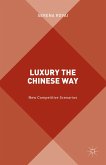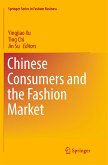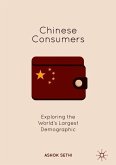Master's Thesis from the year 2014 in the subject Business economics - Offline Marketing and Online Marketing, grade: A, Tongji University, language: Mandarin, abstract: In the luxury industry, the use of co-branding as a marketing strategy becomes more and more important and gives rise to a wide range of questions. This brand strategy is all-pervasive in Western countries but remains an innovative and new phenomenon in China. To this respect, the aim of the research is to investigate the reactions of Chinese consumers towards luxury co-branded product. It focuses on the impact co-branding could have on the brand image and on the Chinese people¿s brand perception, as factors influencing the luxury goods consumption. The study also identifies the keys of a successful luxury co-branding strategy in China. For the purpose of the investigations, the impact of co-branding on Chinese consumers was measured by using both quantitative and qualitative research. A survey permitted to have a direct access to how Chinese luxury shoppers will react to co-branding strategy and it will influence or not their consumption of luxury goods. Experts¿ interviews were able to reach a wider view of the feasibility of co-branding within the Chinese luxury market. The findings of the research show that the co-branding strategy in the Chinese luxury industry will be positively accepted by Chinese consumers, as an innovative and trendy product introduction. The results also bring insightful knowledge about the Chinese consumers¿ perception towards co-branding strategies, identifying two times landscapes: the short and long terms effects. The research emphasized on the importance of the brands fitting to perform a successful co-branding in China. It also explains the reasons why using collaboration with Chinese luxury brands will not be a perfect choice at the moment, but will be successful in the upcoming years. The contributions of the study go beyond the theoretical and the managerial sides. The study gives new explanations to scholars about the co-branding strategy and its impacts on the brand image but it also helps managers from the luxury industry to have access to insightful brand management ideas. The originality of the study lies on the fact that co-branding in China is a new phenomenon and it is even true in the luxury industry. The investigation also opens new paths for further research in the area of co-branding strategies, consumers¿ behaviors and brand image management in China.








